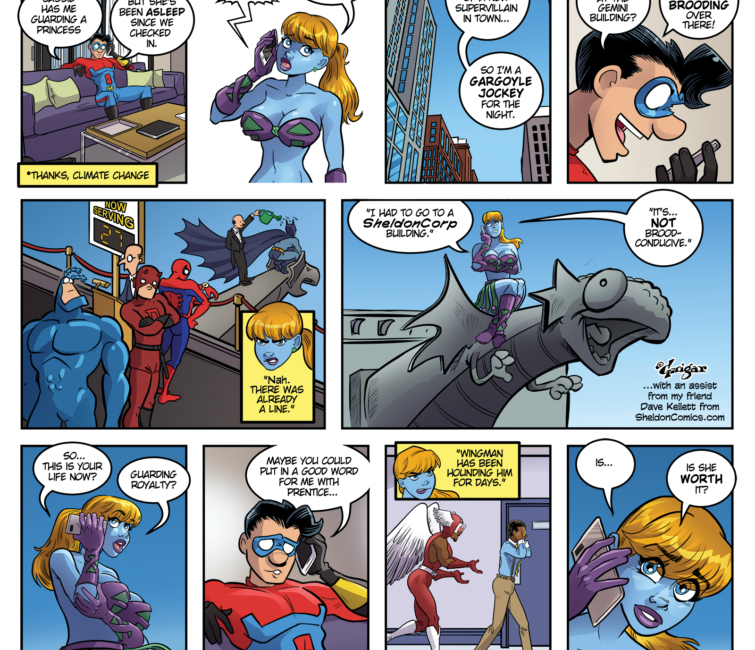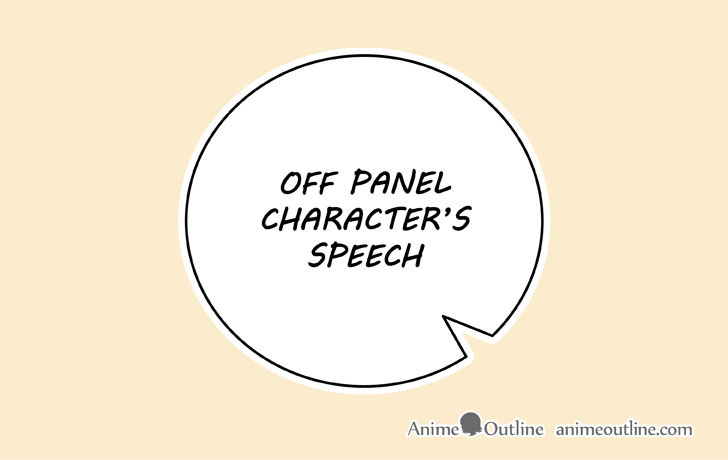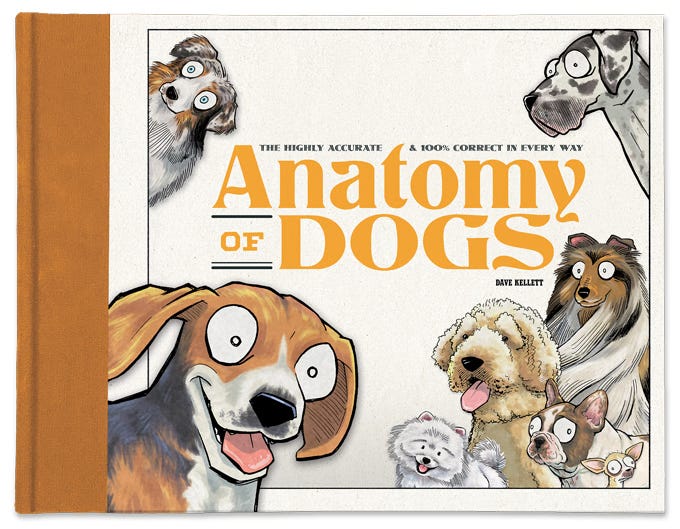This big winner this week was the livestream I hosted on Friday! We talked about how the new tariffs are wreaking havoc on comics publishing. I also shared tips towards better branding, and some simple audience-building strategies you can implement right now! Plus, I outlined my proven two-pronged process of publishing comics on Substack.
Live with Brad Guigar
Thank you E.R. Flynn, Ryan Summers, Marek Bennett, Tess McCarthy, and many others for tuning into my live video! Join me for my next live video in the app.
This week, I also shared my method for writing longform comics that allows me to continuously produce pages — even as I’m still writing them!
It's easy to get bogged down in details when you're writing. And if you're not careful, that can result in a story that meanders and wanders. (Ask me how I know!) So I suggest starting with a story structure. I'm a strong proponent of using a sitcom structure to plan a 22-page comic. Simplified, it looks like this:
Pages 1-3 — Establish the main protagonist and the Goal or Quest. In other words, what is the hero trying to accomplish?
Pages 4-5 — Story A: The protagonist tries to accomplish the Quest and fails.
Pages 6-8 — Story B: Subplot is introduced. A second protagonist is presented, and a second Quest. This second Quest may or may not be related to the main Quest). In a Seinfeld-style story, these two Quests would intersect at the end of the story.
Page 9 — Story A: The protagonist tries again and fails — or he/she meets new obstacles.
Pages 10-12 — Story B: The secondary protagonist tries to achieve the secondary Quest and also fails/meets new obstacles.
Page 13 — Story A: We check in to see the progress. More fails.
Page 14 — Story A: re-establish (and possibly re-state) the main Goal — emphasize its importance/significance.
Pages 15-17 — Story B: The secondary storyline is tied up. The goal is either reached or lost for good. Or, the real victory is in a side goal. In any event, the subplot is now settled. Page 17 can either be the climax or a transition scene back to Story A.
Pages 17-18 — Story A: Climax. The Quest is at an end. Our main protagonist has either succeeded or failed spectacularly. Perhaps the Quest of the subplot has had an effect on this main Quest.
Pages 19-20 — The fallout. What are the repercussions of all of this? Where does the storytelling leave our characters? What are the new (if any) relationships that are formed? If nothing new is achieved, we simply show the characters settling back into Square One so they can be thrown to the wolves next time.
If you'd like, you could use a different structure — like the Hero's Journey or the Story Circle (explained below). The important thing is this: Even if you don’t use the breakdown I shared above, it's helpful to have some sort of structure against which you can build the story you're writing. In other words, this is not an open-ended process. You will devote a predetermined number of pages to each story section. Knowing this in advance will keep your writing moving along briskly — something your readers will appreciate.
Writing 'beat to beat'
I've been writing longform comics on the Web for ten years. Building and maintaining my audience requires a consistent posting schedule. But how can I take the necessary time to craft a compelling storyline and continue posting every week? It's a bit of a juggling act, but I've developed a system that makes it manageable. I'm going to open up my sketchbook and show you how can plan your story ahead of time and continue writing
We talked about inverted word-balloon tails and whether they’re the right choice for your comic.
Inverted word-balloon tails
It's part of the comics lexicon familiar to manga and manhwa readers: an inverted word-balloon tail indicating that the speaker is off-panel.
On April 15th, I talked about a problem none of us wish to face — owing money to the IRS that you can’t pay! Making the wrong decision in handling this could cost you thousands of dollars! I shared some straight talk on handling it wisely — and surviving the process!
Tax panic
Today is the federal income tax deadline in the United States. But ... what if you owe money and can’t pay? Don’t make a bad situation worse. This could end very badly if you mishandle it.
Earlier on the ComicLab podcast, my co-host, Dave Kellett, shared the actual numbers from his recent Kickstarter campaign. Some of the revelations were jaw-dropping!
* Analytics from the previous Kickstarter campaign for "Anatomy of Dinosaurs." Dave had discontinued his use of Facebook several years earlier, so no comparable statistics are available.
Dave was able to drive 46 Kickstarter backers from his Bluesky account, where his follower count was 4,300. That's a conversion rate of 1.06% — 42,400 times larger than the paltry amount that Instagram was able to scrape up.
In short, despite eliminating the "Big Three" social media platforms from his promotional outreach, Kellett reports that this was the most successful Kickstarter for a Sheldon-branded book ever. Bluesky's conversion rate is 56 times bigger than the pledges Twitter was able to deliver and — get this — 42,400 times larger than the paltry amount that Instagram was able to scrape up.
This is the clearest indication yet that Bluesky is delivering the strongest results of all of the social media platforms.
Anatomy of a Kickstarter Campaign
On a recent episode of ComicLab, Dave Kellett shared the real numbers from the Kickstarter campaign for his latest book, "Anatomy of Dinosaurs." Some of those analytics reinforce long-held truths — for example, Kickstarter continues to dominate in using internal mechanisms to maximize backers. However, there was one big surprise: Bluesky outperformed Twitter, Instagram, and Facebook in delivering pledges — by a jaw-dropping margin. After dropping the “Big Three” and focusing on Bluesky, Kellett reported a record-high Kickstarter total.
Coming soon…
Should you create your own font?
Kishōtenketsu — storytelling without conflict
How do I get my work “out there?”
“Help! My archive is too big — and it’s scaring away readers!”
Are you looking for excuses or solutions?
How to create memorable characters







